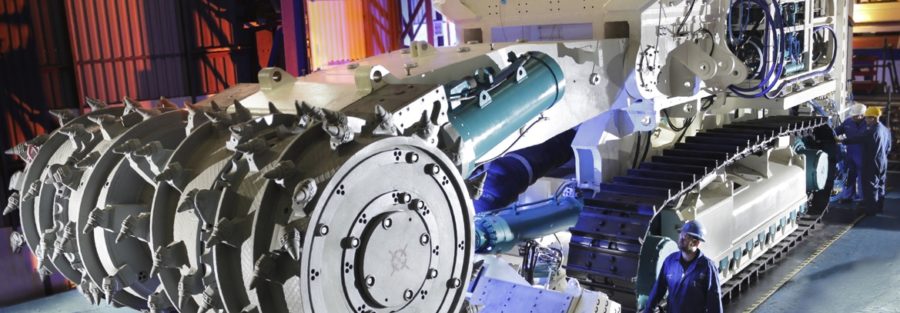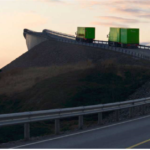How ESG* analysts should think – The dilemma of the electrification of the world – Seabed mining
To respect the Paris agreement, we are pushing electrification to another level in the world to replace fossil energy with renewable energy. That is the ”easiest” solution. Few seriously believe that reducing drastically the standards of life in the western world will ever see light, at least as long as we have the choice. Would you like to, say, have no car, not travel by air, buy clothes every 5 years, have max 17 degrees in your house in the winter (if you live in a colder part of the world), have min 35 degrees in your house in the summer (if you live in a warmer part of the world), never eat meat, etc? No, that will not work and imposing this would likely lead to massive riots, see only now in some countries what the smart Covid-19 restrictions trigger in terms of protests.
The electrification of the world – what it requires
The electrification of the world requires a lot. Some argue simplistically that there is free waterfalls, wind, waves and solar radiation to take, hence this can be solved easily and it’s all clean. But there is unfortunately more to it.
We need to produce electricity from movements or through photovoltaic processes, transport it through the grid, partially store it in batteries, and re-transform the electricity into movement or heating/cooling.
This requires massive quantities of metals of all kinds, including metals from rare earths. I’m not dealing here with other issues on recyclability of some of the renewable equipment, that is another subject by it self.
Sources today and in the future of key metals to the electrification
Today, most is mined in emerging countries, like for instance Congo and superpowers like China. These are reputed for dirty mining with severe consequences on the local environment and communities. The latter without any power to stop it, either due to corrupt countries or no room for free voicing without punishment. Some of these mines are also reputed for unacceptable human treatment and working conditions, including child labor. The transparency here is very low, but there are all reasons to believe that CSR or ESG factors are not taken sufficiently into account in the mining activities.
Europe and the US realise that there is not enough of the required metals available today to electrify the society to respect the Paris agreement and that they are too dependent on others, including super powers like China that in the current geopolitical situation may disrupt deliveries at any moment. See for instance what the EU has been communicating on this. These ”dependent” countries will therefore develop own mining, but where? Seabed is an important path being explored now. See for instance how Norway with its lage continental shelf (NSC) is paving the way to explore this. Globally we also see how countries are working to extend their borders under water, this is much about the potential of future valuable sea bed mining (and fishing of course, but do these co-exist well?), mostly coastal waters. In addition, The International Seabed Authority is issuing licenses for seabed mining in international waters, mostly deep sea. In this field China is today the leading actor. Nobody is doing large scale seabed mining today, but the exploration of areas has started.
See this report from the World Bank on the need for metals. This report only focuses on the GHG and not on other Environmental impacts from mining.
Mining – EU regulation – The EU Taxonomy
The EU Sustainable Finance is a lot about making the EU respect the Paris agreement, hence reduce drastically the GHG (Green House Gases) emissions. The more detailed level per sector and company is dealt with by the EU Taxonomy, a tool to define what is ”green”. It is looking at sectors and activities that contribute to the climate change mitigation. It is not dealing fully with mining in its first version, but it is likely to be looked at closer, certainly when the activity will increase a lot in Europe. Particularly when looking beyond GHG emissions. It will be very interesting to see how they will deal with seabed mining as this may be the only way to reduce carbon emissions through electrification. Will the EU look the seabed mining to electrify the world in the eye and properly deal with it (is it environmentally sustainable?) or will they look in another direction as they have no other real option?
Seabed mining and the impact on the life in the sea
The biggest problem we have today is that we know very little about the ecosystem of the deep sea. So understanding the effects of deep seabed mining is then very hard. I’ll here leave that debate as it is not the main topic of this article, but it’s worth following.
The impossibility to discover controversies at the bottom of the sea
NGOs represent an important source for controversies as they are controlling the activities of companies with risks in the focus area of the specific NGO. There is no doubt that it is harder for the NGOs to prove that a seabed operator is not respecting the environment. At least it will require quite expensive equipment to control what is going on deep down in the sea. ESG analysts actually depend on the NGOs to screen out the companies with controversies in the Environmental, Social and Governance areas.
Conclusion – Seabed mining – How ESG analysts should think
As an ESG analyst, it is easy to see that the required electrification of the world is also posing some serious issues if you take into consideration the current sources for the raw materials needed and in what condition these are produced. The question then is how to you include this as an ESG risk for say, a wind mill manufacturer, a battery manufacturer or a electric engine manufacturer and their suppliers? And also the companies buying this type of machines and components to be able to operate, for instance a renewable electricity producer? We need to look deep in the supply chain to understand the full ESG risk.
Will the seabed mining in correct working conditions and human treatment help us here versus the existing on land mining? On these two aspects (Social) yes, but what about the Environmental part? What are the consequences on the life in the sea from large scale seabed mining? Is plastic in the sea a smaller or bigger problem for life in the sea than seabed mining? Will the geopolitical and economic arguments dwarf the Environmental (E) arguments?
It may be we’re going from one E problem to another, this is very much in line with the history of the human beings on earth, where we are ignoring the long term impacts and exploit a resource to its end before jumping to the next.
And even if we know this human history, the geopolitical situation may actually reduce the E risks of an operator in the sense that the EU regulators will not ”hit down” on it through the EU Taxonomy, Inevitable Political Response or other. But it would undermine the ”green” politics…
We can hope for technological progress and other future evolution making the seabed mining really sustainabe, but as an ESG analyst now I still see this as a risky element mainly in the E (Environmental) part of the analysis for the whole value chain of electrification.
How do you think we should deal with this to get the right ESG risk assessment? And how should the seabed mining companies construct their CSR** policy in a proper way?
*ESG factors – Environmental, Social and Governance factors.
**CSR – Corporate Social Responsibility




